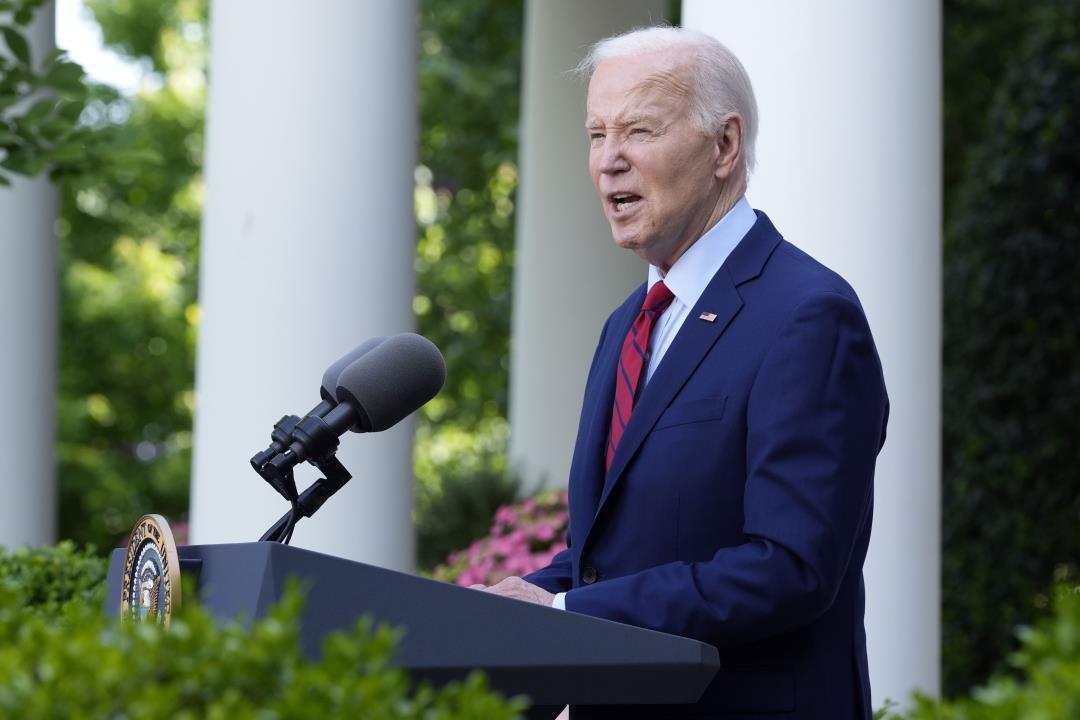Wyoming
In Wyoming, a Tribe and a City Pursue Clean Energy Funds Spurned by the Governor – Inside Climate News

When Wyoming Governor Mark Gordon told the Environmental Protection Agency in 2023 that the state would not be applying for federal grant money to reduce pollution and greenhouse gases, he left most communities in the state without access to potentially transformative funds to upgrade infrastructure, reduce pollution and bring down costs for local governments.
But in the nation’s most sparsely populated state, only two cities and the Northern Arapaho and Eastern Shoshone tribes could qualify on their own for Climate Pollution Reduction Grants (CPRG) from the $4.6 billion made available to states, cities, tribes and territories under the Inflation Reduction Act to reduce greenhouse gas emissions and air pollution. On April 1, Cheyenne, Wyoming’s capital, submitted its application for more than $99 million to cover most of the costs of building two solar farms and making upgrades to both of its wastewater treatment plants.
The Northern Arapaho, which is qualified to apply for the $4.6 billion in general funding, met the EPA’s deadline to do so earlier this month. The tribe is also eligible for $300 million in EPA tribal funding, for which it is finalizing an application ahead of a May 1 deadline. The tribe hopes federal money will fund a solar-powered micro-grid on its reservation, enable weatherization and energy efficiency upgrades to residents’ homes and help convert the tribe’s vehicle fleet to electric and hybrid cars.
We’re hiring!
Please take a look at the new openings in our newsroom.
See jobs
Officials from the Northern Arapaho Tribe and city of Cheyenne called the grant money potentially transformational.
“This money would really, truly help big time,” said Dean Goggles, environmental director for the Northern Arapaho Natural Resources Office.
Wyoming faces a series of climate change-related threats to its environment, people, plants and animals. Temperatures in the state have already risen 2.5 degrees Fahrenheit since the onset of the 20th century, according to Emily Bertram, an environmental protection specialist at the EPA. As temperatures rise, the rate and severity of droughts and wildfires are projected to increase and the severity of storms across the state is expected to rise, too. With “unprecedented warming” expected to continue, “communities in Wyoming will continue to experience higher average temperatures, warmer winters, decreased snowfall, stronger storm precipitation events and increased risk of drought and wildfires,” Bertram said.
The Northern Arapaho will likely prioritize projects that will increase the tribe’s energy independence and the community’s resilience to severe weather events. Tribal planners began working on the community’s application last fall, and identified the building and transportation sectors as the largest sources of climate-warming emissions the tribe could address.
“There’s a lot of interest in solar here,” said Steve Babits, an environmental scientist with the Northern Arapaho Natural Resource Office. “People are pretty interested in being more self-sufficient with the utilities.”
In its Priority Climate Action Plan (PCAP), a planning document the Northern Arapaho submitted to the EPA last month in order to qualify for general funding, the tribe laid out plans to apply for funds to build a community‐scale solar farm with battery storage on the Wind River Reservation. Such a project could reduce the tribe’s emissions and “provide affordable, reliable power” to the community, the tribe wrote. As Goggles and Babits met with tribal government groups about the PCAP, they said the idea proved popular. “Everyone is faced with high utility bills,” Babits said. “What we’re looking at is something that would be off the grid and generate its own power.”
Weatherizing housing on the reservation is another of the tribe’s top priorities. By constructing high-efficiency buildings using electrical heating systems, putting them close together and retrofitting current buildings with better insulation, the tribe can minimize driving and create homes that “more easily ‘ride out’ power failures during inclement weather by minimizing heat energy losses to the exterior,” it said. This would help solve “major public health issues on the reservation” during Wyoming’s biting winters.
The Northern Arapaho also signaled they might seek funds to replace the tribe’s fleet of diesel and gas-powered vehicles with electric and hybrid ones.
Babits said funding for any of these plans would help the community create jobs. “The reservation is an underserved community, it could really benefit from that,” he said.
About 300 miles to the southeast of the Wind River reservation, Renee Smith had been working diligently on Cheyenne’s PCAP and CPRG. “We’ve been working toward this for a year. We just weren’t anticipating being the lead,” she said, referencing Gordon’s decision to remove the state from funding consideration.
Like the Northern Arapaho, Smith sees these funds as an opportunity to expand Cheyenne’s renewable energy portfolio. The city is working with Black Hills Energy, a local utility company, to install solar panels on city-owned cattle grazing lands, the municipality’s closed landfill and both its wastewater treatment plants. (In Wyoming, cities cannot own and provide their own energy.) Together, these projects could add more than 96,000 megawatts to Cheyenne’s grid annually, helping the city meet its growing energy demand as more data center companies flock to the area, Smith said.
Pairing solar panels with cattle grazing, a burgeoning practice known as agrivoltaics, could be particularly transformative for the city. Cheyenne makes money by leasing land for grazing, and leasing that same land for solar development to a utility like Black Hills Energy is a way for the city to do some “double dipping,” Smith said.
“Cheyenne would become a national leader” if the city received money for this idea, Smith said. “No project in America would come close to the size and scale of this proposed project.”
Reusing the city’s old landfill as a solar farm would help power low-income residents’ homes, Smith said, and the goal would be to one day create a community solar site run by Black Hills. Installing solar panels at its Crow Creek and Dry Creek wastewater treatment plants would allow Cheyenne to power municipal infrastructure with cheaper energy, which would free up tax dollars “to fund quality of life projects” like outdoor and indoor recreation facilities Smith said. “We feel like this is just a once in a lifetime opportunity.”
In its CPRG application, the city also included plans to capture and sell methane collected from Dry Creek wastewater treatment plant to local utilities that can burn it as natural gas.
Any of these projects would develop employment opportunities in Cheyenne. Solar installation creates jobs “on the front end,” Smith said. As the panels are being set up, Cheyenne would train a workforce to “make sure we have enough qualified people to manage these [panels] and maintain them,” she said.
Absent federal funding, Cheyenne would be hard pressed to find ways to get these projects off the ground. Wyoming offers Energy Matching Funds, money from state coffers awarded by the Wyoming Energy Authority to projects that meet an array of energy criteria—most of which are focused on preserving the extraction and use of fossil fuels in a clean energy economy.
Cheyenne’s goal is to win as much grant money as it can from the federal competition, but “it would be great if the state could support this. Even in this small way,” Smith said.
This story is funded by readers like you.
Our nonprofit newsroom provides award-winning climate coverage free of charge and advertising. We rely on donations from readers like you to keep going. Please donate now to support our work.
Donate Now
States and cities that have applied for CPRG funds will compete against one another based on grant proposal size. It is not yet clear how many other states or cities joined Cheyenne in applying for CPRG funding between $50 million to $99 million, but the EPA plans to award anywhere from six to 12 grants in that range, according to an EPA announcement in January.
If both the Northern Arapaho’s applications are deemed suitable for funding, the EPA would award the tribe only one grant.
With only two applicants from Wyoming, and Gordon electing to keep the state on the sidelines, grant planners from the Northern Arapaho and Cheyenne said they are aware that the rest of the state may be keeping tabs on how their applications turn out should the two communities receive funding.
“Hopefully we can be a leader on this in the state and be a good example for everyone,” Babits said.
“It’s really exciting that we get to apply for these funds—and it’s even more exciting if we can move ahead,” Goggles added. “I’m anxious for it.”

Wyoming
Biden blocks China-backed crypto mining firm from Wyoming

The United States government has ordered a Chinese-backed cryptocurrency mining company to stop constructing a mine in Wyoming.
According to the May 13 order signed by President Joe Biden, MineOne Cloud Computing Investment and its partners will be required to divest the property located near the Francis E. Warren Air Force Base in Cheyenne, Wyoming.
MineOne Cloud is majority-owned by China. The company acquired the land in June 2022 and was preparing to set up a crypto-mining operation.
“There is credible evidence that leads me to believe that MineOne Partners Limited, a British Virgin Islands company ultimately majority owned by Chinese nationals […] might take action that threatens to impair the national security of the United States,” the order stated.
The order also requires the firm to remove all installed equipment from the site. It also bans Chinese-linked entities from accessing the site, which is situated closehttps://crypto.news/uniswap-founder-urges-democrats-to-immediately-change-bidens-approach-to-crypto/ to the U.S. air base.
MineOne has 120 days to wind up operations and sell the property. The firm is also prohibited from transferring these assets to any third party.
The mining site was initially flagged in October 2023 by tech giant Microsoft, which operated a data center in the area.
Microsoft issued an alert to the Federal Committee on Foreign Investment in the United States, raising concerns that the site could be a “full-spectrum intelligence collection operation.”
“We suggest the possibility that the computing power of an industrial-level crypto-mining operation, along with the presence of an unidentified number of Chinese nationals in direct proximity to Microsoft’s Data Center and one of three strategic-missile bases in the U.S., provides significant threat vectors,” Microsoft stated in its report.
The report followed an investigation by the committee that identified national security risks.
Over the past years, the U.S. has seen multiple Chinese-owned crypto-mining farms migrating to the nation following a ban in China in 2021. Some regions in the U.S. offer cheap electricity rates, which is a major selling point for these entities.
According to a New York Times report, Chinese-owned mining farms were reported in at least 12 states, including Texas, Wyoming, Arkansas, and Ohio.
Last month, the Biden government initiated a crackdown on the cryptocurrency mining sector with a 30% tax on electricity use by the miners. The move was met with criticism, with Senator Cynthia Lummis, a Wyoming Republican, claiming it would “destroy” the sector.
Wyoming
Biden: Crypto Firm Can't Own Land Near Wyoming Base

President Biden issued an order Monday blocking a Chinese-backed cryptocurrency mining firm from owning land near a Wyoming nuclear missile base, calling its proximity to the base a “national security risk.” The order forces the divestment of property operated as a crypto mining facility near the Francis E. Warren Air Force Base. MineOne Partners Ltd., a firm partly backed by Chinese nationals, and its affiliates are also required to remove certain equipment on the site. More, from the AP:
- This comes as the US is slated on Tuesday to issue major new tariffs on electric vehicles, semiconductors, solar equipment, and medical supplies imported from China, according to a US official and another person familiar with the plan.
Wyoming
Australia Company Targets 85 Million Pounds Of Uranium In Northeast Wyoming

To meet growing demand for uranium worldwide, Australian-based Peninsula Energy Ltd. said that it has begun construction on a central processing plant in northeastern Wyoming.
The company’s Ross processing plant will take uranium processed at other Peninsula-owned mines in northeastern Wyoming and produce yellowcake, which is then shipped to Illinois to turn into enriched fuel for nuclear reactors.
The fuel supply chain looks upbeat for Peninsula.
On Monday, Peninsula expanded its estimate for uranium underground in its flagship Lance project near Gillette by 7.8% to 58 million pounds.
The company also expanded its estimates for uranium deposits by 19.6% to 26.2 million pounds in its nearby Ross and Kendrick mines, also located in the northeastern Wyoming area.
“This resource growth comes at an opportune time with the United States government continuing to take meaningful action to reinvigorate its domestic uranium production and nuclear fuel cycle capacity, [while] the company continues preparing for the resumption of commercial production at our U.S.-based Lance projects,” said Wayne Heili, Peninsula’s managing director and CEO, in a prepared statement.
Uranium Going Nuclear
Several uranium companies in Wyoming are posturing for increased production of the commodity because of higher demand in the United States for nuclear fuel, especially since federal lawmakers have responded to Russia’s invasion of Ukraine by banning imports from Russia.
This month’s ban by Washington has spurred domestic development of nuclear fuel for reactors and led to many uranium mining companies to restart production in Wyoming and elsewhere.
Uranium spot prices hit $107 per pound in early February but have since backed off to about $91 a pound as of Monday, according to Atlanta-based UxC LLC, which tracks uranium spot prices on a nuclear fuel exchange.
Peninsula does business in Wyoming through its Strata Energy Inc. unit, which operates the Lance project near Gillette and other mines.
The Ross central processing facility is a key part of Peninsula’s supply chain in Wyoming.
“This is a key piece of the jigsaw for us, providing the ability to produce a finished product for our customers without having to rely on any third-party processing facilities,” Heili said.
“We remain confident of hitting our production targets for 2025,” he said.
Samuel Engineering Inc., with offices in Wyoming and Denver, was hired by Peninsula to get the project ready for restart of production before the end of 2024.
Double Capacity At Ross
The Ross plant was originally built in 2015 as an alkaline in-situ recovery facility capable of producing up to 1 million pounds annually of uranium. Samuel was hired to build additional plant facilities to expand production capacity to 2 million pounds.
Instead of digging up uranium in a mine or surface pit, Wyoming’s mining companies perform in-situ recovery of the mineral. This kind of operation involves pumping oxygenated water with an occasional addition of bicarbonate of soda into the ground to get at the uranium.
In-situ mining has low environmental impact.
In this process, the uranium is dissolved and pumped to the surface, where the mineral is stripped from the water. The water stripped of uranium is then returned underground.
In March, Peninsula agreed to sell between $88 million and $117 million worth of Wyoming uranium to a European nuclear fuel buyer from the Lance project.
To pay for restart of production at the Lance facility, Peninsula raised nearly $60 million in late 2023. Combined, the company plans to take uranium mined at the Kendrick, Barber and Dagger project in Crook County, Wyoming, and convert it to yellowcake at the Ross processing facility.
The agreement with the European buyer requires the company to sell 1.2 million pounds of uranium over a six-year period starting in 2028 to Synatom, which manages the supply of enriched uranium to Belgium’s nuclear power plants.
With the inclusion of this new sales agreement, the company’s total contractual sales obligation over the upcoming decade is 6 million pounds.
Pat Maio can be reached at pat@cowboystatedaily.com.
-
News1 week ago
A group of Republicans has united to defend the legitimacy of US elections and those who run them
-

 Politics1 week ago
Politics1 week agoHouse Dems seeking re-election seemingly reverse course, call on Biden to 'bring order to the southern border'
-

 Movie Reviews1 week ago
Movie Reviews1 week agoExhuma Movie Review: An effective horror film steeped in myth, legends, and realism
-

 World1 week ago
World1 week ago‘It’s going to be worse’: Brazil braces for more pain amid record flooding
-

 Politics1 week ago
Politics1 week ago'Stop the invasion': Migrant flights in battleground state ignite bipartisan backlash from lawmakers
-

 World1 week ago
World1 week agoGerman socialist candidate attacked before EU elections
-

 World1 week ago
World1 week agoSpain and Argentina trade jibes in row before visit by President Milei
-

 Politics1 week ago
Politics1 week agoRepublicans believe college campus chaos works in their favor















